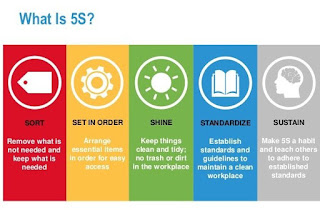Between UV radiation and flying debris, welding
can certainly cause damage to your eyes, but only if you don’t observe the
correct safety protocol. Since 25% of all welding injuries are eye-related,
proper eye protection on the job is a serious issue.
The good news, though, is that most of these eye
injuries are preventable, and the bulk are also reversible. To put that into
perspective, fully 95% of welders sustaining eye injuries are back at work
within a week, while over 50% return within two days.
The debris kicked up when you’re brushing,
grinding, or chipping is potentially hazardous for unprotected eyes. What tend
to get more press, though, are the ultraviolet and infrared rays that both the
welding arc itself and the molten metal generate. We’ll glimpse now at why this
is such a thorny issue for welders.
All the main types of welding produce ultraviolet,
visible spectrum, and infrared radiation. Since reflected light can also carry
radiation, your eyes can be damaged from the arcs of other welders, too.
Ultraviolet radiation (UVR) in particular gets absorbed in the lens and cornea
and leads to swollen, painful eyes. Fortunately, this is seldom permanent.
Eye damage brought about in this manner is called
photokeratitis or “welder’s flash.” While intensely painful, it’s not
irreversible. That said, ongoing exposure to this type of radiation can yellow
both the lens and cornea over time. When this happens, you’ll struggle with
contrast in your vision.
Symptoms of
welder’s flash include the following:
·
Pain –
anywhere from mild to severe – in one or both eyes
·
Irritation
of the eyes
·
Blurred
vision
·
Increased
sensitivity to light
·
Watering
eyes
·
Bloodshot
eyes
In the worst case scenario, you can experience
permanent retinal damage leading to cataracts. Fleeting (if painful) eye
problems from welding are far more common than serious and permanent issues,
but safety is still paramount, so you need to make sure you protect yourself
when you’re in the shop
How to Protect Your Eyes When Welding
The first
thing you need in place is an ANSI-approved helmet.
All auto-darkening helmets that meet ANSI Z87.1 standard offer full protection
against both ultraviolet and infrared rays.
However, since so much welding work is done with
the helmet up, this is not enough if you want to safeguard your eyes. Make sure
you also wear safety glasses with full UV protection. You can opt for clear or
shaded glasses depending on what you feel most comfortable with.
UV protection has nothing to do with how dark the
lenses of your glasses are. In fact, dark glasses that lack adequate UV
protection can be worse than wearing none at all. Your pupils will dilate in
the dark, exposing your retinas to unfiltered ultraviolet rays. Look for
glasses with 100% UV protection, and don’t skimp by looking for the cheapest
pair you can find.
Since you can also suffer from indirect exposure,
you need to protect your eyes even if you’re standing as much as 50 feet from
someone else who’s welding.
You should also wear a face shield over your
glasses when you’re arc welding. When you’re gas welding, you’ll need a shield
and glasses shade-rated anywhere from 3 to 8.
Is It Only Radiation That Can Damage
Your Eyes When Welding?
No, flash burns are the most serious and common causes of
eye injuries when welding, radiation isn’t the only thing that puts your eyes
at risk. There are many other jobs in welding workshops that fling particles
into the air, any of which are potentially harmful if your eyes remain
unprotected.
Angle grinders send debris flying, and any kind of
cutting tools, from band saws to chop saws, have the same capacity to emit
projectiles. Sanding, buffing, and notching pipe are also potentially hazardous
for the same reason.
Thousands of people every year are not just injured
at work but blinded as well. Even sadder than that, 90% of all eye injuries are
preventable if you wear the correct eye protection.
Final Word
Welder’s
flash is an occupational hazard, but it’s one you don’t need to experience if
you take sensible safety precautions. With helmets, safety glasses, and
protective clothing, you can shield yourself from welder’s flash and much more
serious eye injuries.
Don’t
become a statistic just because you couldn’t immediately find your glasses and
decided to take a chance. Always wear them , even if takes a few minutes to
rustle up your safety equipment.
















